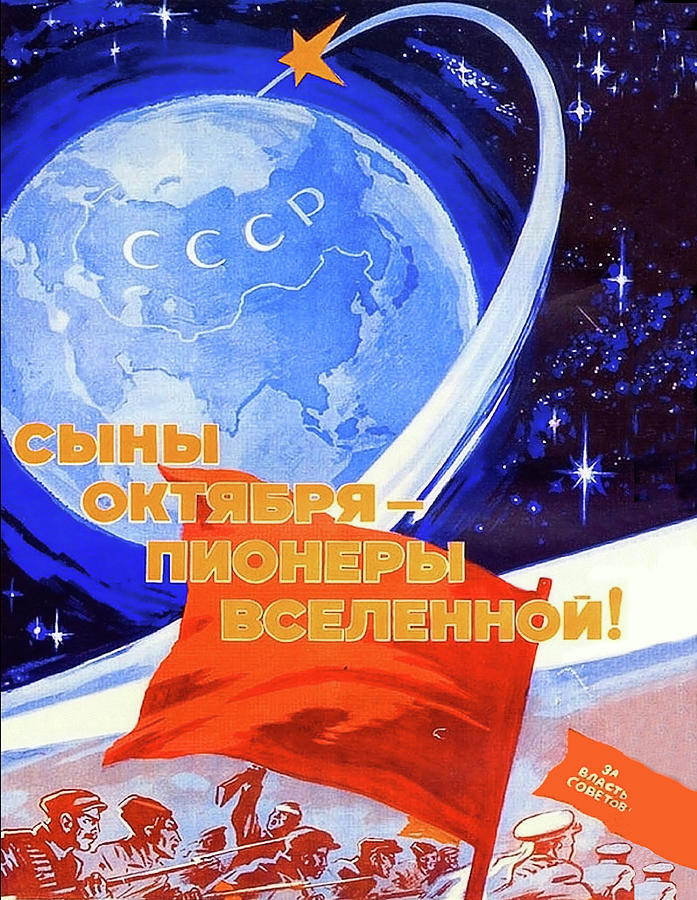
Venera 13, a Soviet spacecraft, was the first lander to transmit color images from the surface of Venus. Although other landers arrived before and after it, pictures from Venera 13 are more widely circulated because they are in color. The spacecraft was designed to last about half an hour on Venus’ harsh surface, but it ended up transmitting data for more than 2 hours after its landing on March 1, 1982. No lander has ventured to the surface of Venus since the 1980s, although several orbiters have made the journey.
Documentation on the Venera program is hard to come by (relatively) because it took place in the former Soviet Union. Unlike the United States’ public space program, the Soviet Union preferred to keep all information about its spaceflights private until officials deemed it appropriate to release the news. The Western world was shocked when the Soviets launched Sputnik, the world’s first artificial satellite, on Oct. 4, 1957. At the time, few Americans realized that the Soviets had the technology to send satellites into space. The Soviets also kept plans for other achievements private until they were accomplished. Some prominent examples include the flight of the first man in space, Yuri Gagarin, on April 12, 1961, and the first spacewalk by Alexei Leonov on March 18, 1965.
With the beginning of Detente between the two superpowers in the 1970s however, Soviet-American relations improved somewhat and in 1975, the two countries at a joint mission together (Apollo-Soyuz). Information about the Soviet space program was more open during this time, but it was not until 1991 (with the collapse of the Soviet Union) that information was more freely shared with the West.
Both NASA and the Soviet Union reached for Venus in the early days of their space program in the 1960s, but were hampered by a series of failed probes. After the failure of Mariner 1, NASA’s Mariner 2 became the first spacecraft to fly by Venus on Dec. 14, 1962, revealing a hot planet under high pressure, with unbroken clouds shrouding the surface. The Soviets had their first successful Venus mission in 1967 – with Venera 4 – after several failed attempts to reach the planet. On Oct. 18, 1967, Venera 4 became the first probe to transmit information back to Earth while entering the atmosphere of Venus. From there, the Soviets experienced more success. On Dec. 15, 1970, Venera 7 was the first spacecraft to make a soft landing on Venus. The spacecraft transmitted information for 23 minutes on the surface before succumbing to the heat and pressure. Five years later, Venera 9 was the first to send back pictures from the surface.
Venera 13 launched on Oct. 30, 1981, aboard a Proton rocket from the Baikonur Cosmodrome (located in Kazakhstan). The spacecraft carried several instruments on board, including spectrometers, a drill and surface sampler, and a panoramic camera. Venera 13 touched down safely on March 1, 1982, in the southern hemisphere of Venus. The broad area around the landing site is known to contain lava flows and small dome volcanoes, which may indicate an active surface. During its two hours on the surface, Venera 13 was able to take fourteen color photographs and eight black and white photographs of the surface of Venus. Venera 13 also extended a drilling arm to the surface and analyzed it inside a sealed chamber. The spacecraft kept track of parameters such as the depth the drill reached and the speed of the drilling rig, to get more information about the surface’s physical characteristics. The results showed that the surface characteristics correspond to compacted ash material such as volcanic rock.
The Soviet Union sent three more Venera spacecraft to Venus. Venera 14, a twin of Venera 13, launched five days later and also reached the surface. It lasted there for 57 minutes. Venera 15 and Venera 16 subsequently orbited Venus together and sent back information between 1983 and 1984.
Other spacecraft have visited Venus since the Venera series, but all of them were orbiters or flyby missions. The Soviet Union’s Vega 1 and Vega 2 both flew by in the 1980s. NASA sent the Magellan spacecraft in 1989, which produced the first high-resolution global map of the surface. The European Space Agency’s Venus Express orbited the planet between 2006 and 2014, until it ran low on fuel and was deliberately thrown into the atmosphere.
As of early 2019, Japan’s Akatsuki mission is still studying Venus’ climate and atmosphere. NASA and Roscosmos (Russian space agency) are discussing a successor Venus landing mission called Venera-D that could last for months on the planet’s surface.
